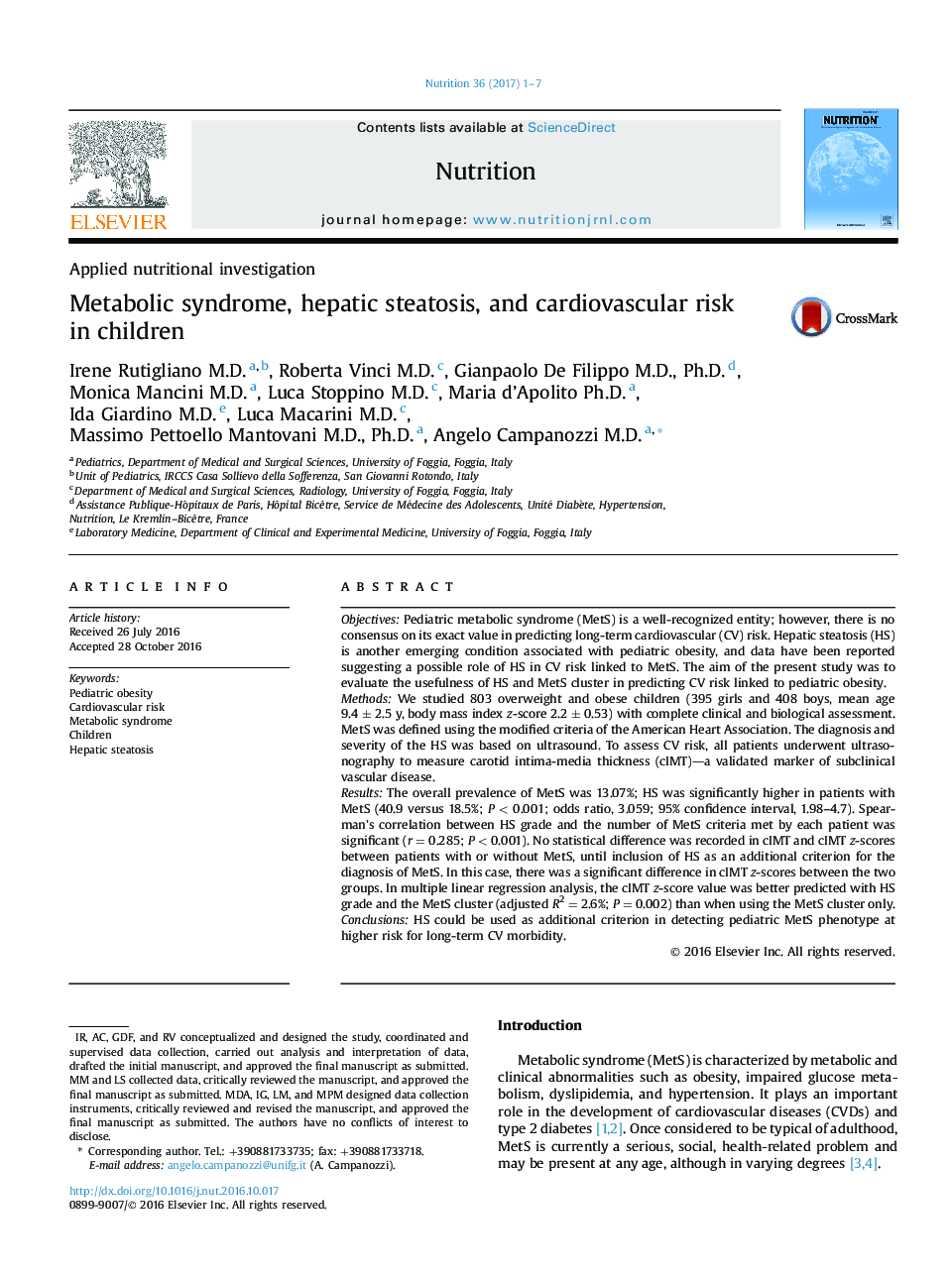| Article ID | Journal | Published Year | Pages | File Type |
|---|---|---|---|---|
| 5657029 | Nutrition | 2017 | 7 Pages |
â¢Metabolic syndrome (MetS) can be identified in obese individuals during childhood.â¢Hepatic steatosis is intrinsically related to the cluster of metabolic derangements of MetS.â¢Considering hepatic steatosis in defining MetS might help detect children at increased cardiovascular risk.
ObjectivesPediatric metabolic syndrome (MetS) is a well-recognized entity; however, there is no consensus on its exact value in predicting long-term cardiovascular (CV) risk. Hepatic steatosis (HS) is another emerging condition associated with pediatric obesity, and data have been reported suggesting a possible role of HS in CV risk linked to MetS. The aim of the present study was to evaluate the usefulness of HS and MetS cluster in predicting CV risk linked to pediatric obesity.MethodsWe studied 803 overweight and obese children (395 girls and 408 boys, mean age 9.4 ± 2.5 y, body mass index z-score 2.2 ± 0.53) with complete clinical and biological assessment. MetS was defined using the modified criteria of the American Heart Association. The diagnosis and severity of the HS was based on ultrasound. To assess CV risk, all patients underwent ultrasonography to measure carotid intima-media thickness (cIMT)-a validated marker of subclinical vascular disease.ResultsThe overall prevalence of MetS was 13.07%; HS was significantly higher in patients with MetS (40.9 versus 18.5%; P < 0.001; odds ratio, 3.059; 95% confidence interval, 1.98-4.7). Spearman's correlation between HS grade and the number of MetS criteria met by each patient was significant (r = 0.285; P < 0.001). No statistical difference was recorded in cIMT and cIMT z-scores between patients with or without MetS, until inclusion of HS as an additional criterion for the diagnosis of MetS. In this case, there was a significant difference in cIMT z-scores between the two groups. In multiple linear regression analysis, the cIMT z-score value was better predicted with HS grade and the MetS cluster (adjusted R2 = 2.6%; P = 0.002) than when using the MetS cluster only.ConclusionsHS could be used as additional criterion in detecting pediatric MetS phenotype at higher risk for long-term CV morbidity.
